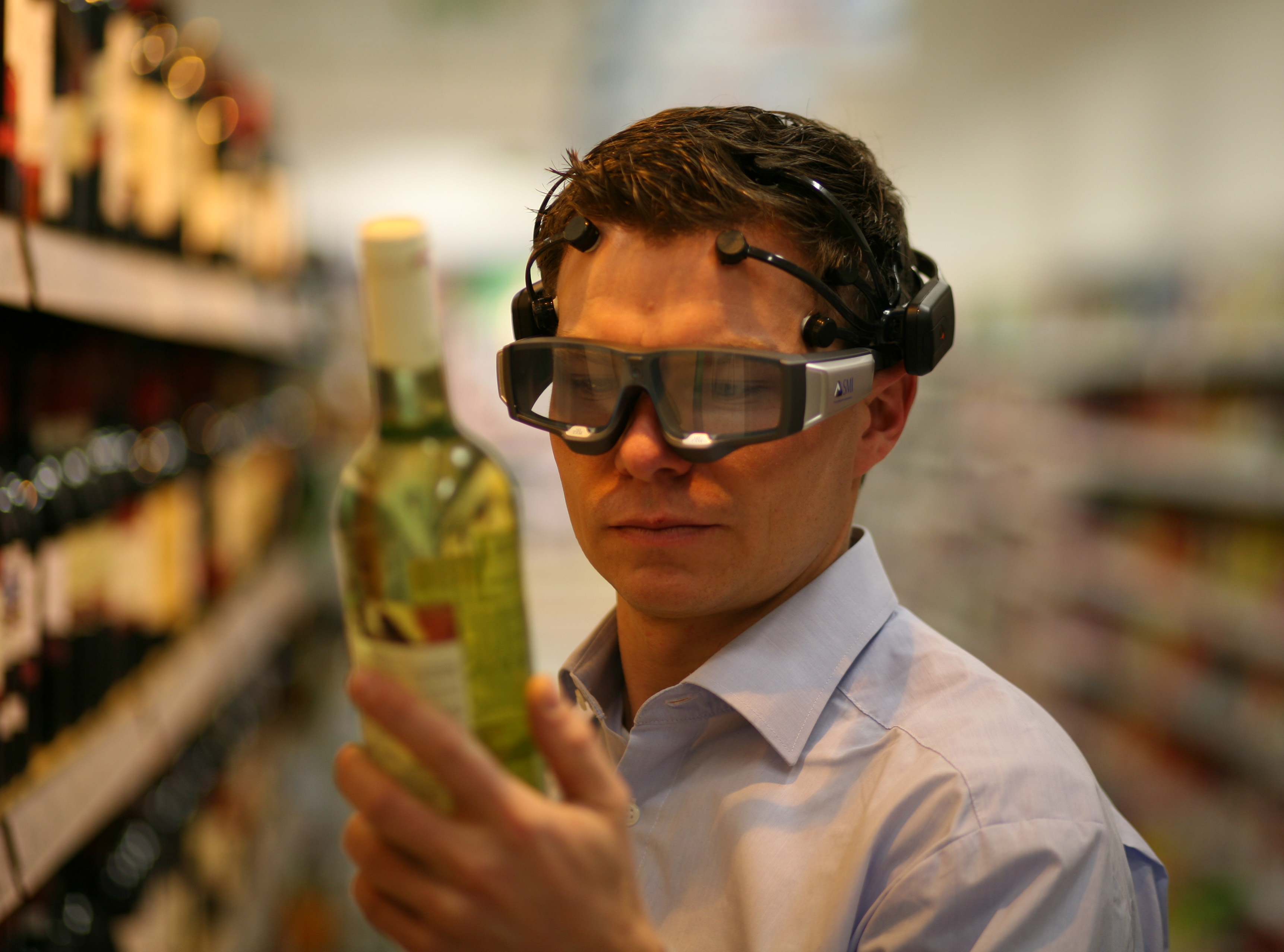1. Cause a sense of belonging
The American marketing guru Ernest Ditcher was one of the first to notice that you can easily convince consumers that they had a need for a product by forcing consumers to work on their purchases.
In 1930, General Mills company, which owned the brand Betty Crocker, asked Ditcher to increase the sale of their mixes for cakes. He advised the company to stop using mixtures of egg powder. Let housewives themselves add to eggs to the dilute batter. This trick worked perfectly and helped Betty Crocker become a commercially successful brand, which has become trusted by millions of housewives.
Assigning the consumers a part in the preparation of the pie - though it was minimal - Ditcher inspired women feeling that the result depends on them, and so they began to appreciate him more.
2. Charge the adrenaline
In some shops, buyers gets a discount only after chaffering. Allowing them to believe that they fooled the seller having bought the selected item for a better price, the seller flatters their pride and make them willing to purchase even more.
This is partly caused by so-called attribution error, which occurs when the warmed emotions are transferred to another object or person caused the situation. For example, people who decide to go on a first date on a roller coaster or watching a horror film, feel that they are attracted to each other more because they mistakenly credited adrenaline, caused by fear, to the presence of another person.
About the same thing happens when the buyer gets a discount. The more the thrill of victory, the more value we attach to things acquired. The same is true when people interrupt each other's bids in the auction.
3. Speak of inferiority
We are warned that we are too fat or bald, pimply or wrinkled, we run the risk of becoming poor parents, failed lovers, ungrateful guests.
Our personal relationships can be destroyed by our body odor, dandruff, too dry or too oily skin, indigestion, heartburn, or teeth white not enough. In other words, all, because of what we did not quite live up to the ideal, could blow us if we don’t buy the product or service being promoted.
Co-founder and creative director of New York's Free Range Studios Jon Sachs emphasizes:
- Since the beginning of modern marketing, professional wheedlers rely on the ‘inferiority method’. Tell the people that the world is dangerous, they do not have what they need, they are don’t fit in somewhere. Then pull out a magic tool - your product.
4. The numbers game
It is known that any product at the price of 9.99 will be accepted by most customers as cheaper than the one that is 10. But it's not just the price. Distortion occurs when the left digit belongs to any transaction.
For example, analyzing the purchase of more than 22 million used cars, Nikola Lachetera from Case Western Reverse University and his colleagues found that the selling price fell abruptly when the run crossed the threshold of the next 10,000 miles. This means that in the eyes of many buyers, a car with a mileage 28,999 miles looks more attractive than the machine where the odometer has 30,000 number.
Although the neurological mechanisms of left figure distortion yet to be figured out, the most likely psychological explanation for this phenomenon is that the consumer pays attention only to the left digit in the number and does take much notice on what is written on the right.
5. Create a positive mental attitude
One of the first psychologists to assume that there is a connection between a man’s posture and his psychological attitudes was Sir Francis Galton, who claimed that the location of the body can define how do guests presented at a dinner party treat each other.
Since then, the close relationship between movements, attitudes and human behavior has been demonstrated in numerous studies. Here are three examples:
Consumers relaxed leaning back in an easy chair cushions, has more flexible approach to negotiations on buying a car than those who are sitting on a hard wooden chair. Setting sales situation in which the client is often encouraged to nod, may significantly increase the desire to buy a product and by making him for any reason turn his head, you make a purchase less likely. Consumers who shop with a basket (curl - a gesture of pulling) are in more "purchasing" mood than the ones that are pushing a trolley (extension of the arms - a gesture of repulsion).
6. Call out to values
At the end of the nineteenth century, women, who bought a pack of Quaker Oats, were tried to convince them that they get more than the usual granola. They were told that they gain unshakable morals, integrity and family values - strong emotional hooks for women then, well, and now. And the thing was in successfully chosen company logo: an image of a Quaker in a wig and a black dress.
What do have a member of the Religious Society common with a dry breakfast? Of course, nothing. But in the mind of consumers, a subconscious connection between the brand and the positive qualities such as integrity and commitment to tradition were created.
A few examples: consumers have a preference for a brand of energy drink, because it’s promoted by a legendary athlete, or spend more than three thousand dollars for a bag Louis Vuitton, because they remember a movie in which some celebrity have the bag. They buy perfume Play for Her by Givenchy, which advertised by Justin Timberlake and Rolex watches, because they have been seen on the hand of Roger Federer.
Advertisers know that these associations, albeit unconsciously, will give rise to confidence that purchasers can achieve the same success if they buy this product.
based on The Brain Sell: When Science Meets Shopping book by David Lewis
The American marketing guru Ernest Ditcher was one of the first to notice that you can easily convince consumers that they had a need for a product by forcing consumers to work on their purchases.
In 1930, General Mills company, which owned the brand Betty Crocker, asked Ditcher to increase the sale of their mixes for cakes. He advised the company to stop using mixtures of egg powder. Let housewives themselves add to eggs to the dilute batter. This trick worked perfectly and helped Betty Crocker become a commercially successful brand, which has become trusted by millions of housewives.
Assigning the consumers a part in the preparation of the pie - though it was minimal - Ditcher inspired women feeling that the result depends on them, and so they began to appreciate him more.
2. Charge the adrenaline
In some shops, buyers gets a discount only after chaffering. Allowing them to believe that they fooled the seller having bought the selected item for a better price, the seller flatters their pride and make them willing to purchase even more.
This is partly caused by so-called attribution error, which occurs when the warmed emotions are transferred to another object or person caused the situation. For example, people who decide to go on a first date on a roller coaster or watching a horror film, feel that they are attracted to each other more because they mistakenly credited adrenaline, caused by fear, to the presence of another person.
About the same thing happens when the buyer gets a discount. The more the thrill of victory, the more value we attach to things acquired. The same is true when people interrupt each other's bids in the auction.
3. Speak of inferiority
We are warned that we are too fat or bald, pimply or wrinkled, we run the risk of becoming poor parents, failed lovers, ungrateful guests.
Our personal relationships can be destroyed by our body odor, dandruff, too dry or too oily skin, indigestion, heartburn, or teeth white not enough. In other words, all, because of what we did not quite live up to the ideal, could blow us if we don’t buy the product or service being promoted.
Co-founder and creative director of New York's Free Range Studios Jon Sachs emphasizes:
- Since the beginning of modern marketing, professional wheedlers rely on the ‘inferiority method’. Tell the people that the world is dangerous, they do not have what they need, they are don’t fit in somewhere. Then pull out a magic tool - your product.
4. The numbers game
It is known that any product at the price of 9.99 will be accepted by most customers as cheaper than the one that is 10. But it's not just the price. Distortion occurs when the left digit belongs to any transaction.
For example, analyzing the purchase of more than 22 million used cars, Nikola Lachetera from Case Western Reverse University and his colleagues found that the selling price fell abruptly when the run crossed the threshold of the next 10,000 miles. This means that in the eyes of many buyers, a car with a mileage 28,999 miles looks more attractive than the machine where the odometer has 30,000 number.
Although the neurological mechanisms of left figure distortion yet to be figured out, the most likely psychological explanation for this phenomenon is that the consumer pays attention only to the left digit in the number and does take much notice on what is written on the right.
5. Create a positive mental attitude
One of the first psychologists to assume that there is a connection between a man’s posture and his psychological attitudes was Sir Francis Galton, who claimed that the location of the body can define how do guests presented at a dinner party treat each other.
Since then, the close relationship between movements, attitudes and human behavior has been demonstrated in numerous studies. Here are three examples:
Consumers relaxed leaning back in an easy chair cushions, has more flexible approach to negotiations on buying a car than those who are sitting on a hard wooden chair. Setting sales situation in which the client is often encouraged to nod, may significantly increase the desire to buy a product and by making him for any reason turn his head, you make a purchase less likely. Consumers who shop with a basket (curl - a gesture of pulling) are in more "purchasing" mood than the ones that are pushing a trolley (extension of the arms - a gesture of repulsion).
6. Call out to values
At the end of the nineteenth century, women, who bought a pack of Quaker Oats, were tried to convince them that they get more than the usual granola. They were told that they gain unshakable morals, integrity and family values - strong emotional hooks for women then, well, and now. And the thing was in successfully chosen company logo: an image of a Quaker in a wig and a black dress.
What do have a member of the Religious Society common with a dry breakfast? Of course, nothing. But in the mind of consumers, a subconscious connection between the brand and the positive qualities such as integrity and commitment to tradition were created.
A few examples: consumers have a preference for a brand of energy drink, because it’s promoted by a legendary athlete, or spend more than three thousand dollars for a bag Louis Vuitton, because they remember a movie in which some celebrity have the bag. They buy perfume Play for Her by Givenchy, which advertised by Justin Timberlake and Rolex watches, because they have been seen on the hand of Roger Federer.
Advertisers know that these associations, albeit unconsciously, will give rise to confidence that purchasers can achieve the same success if they buy this product.
based on The Brain Sell: When Science Meets Shopping book by David Lewis



















